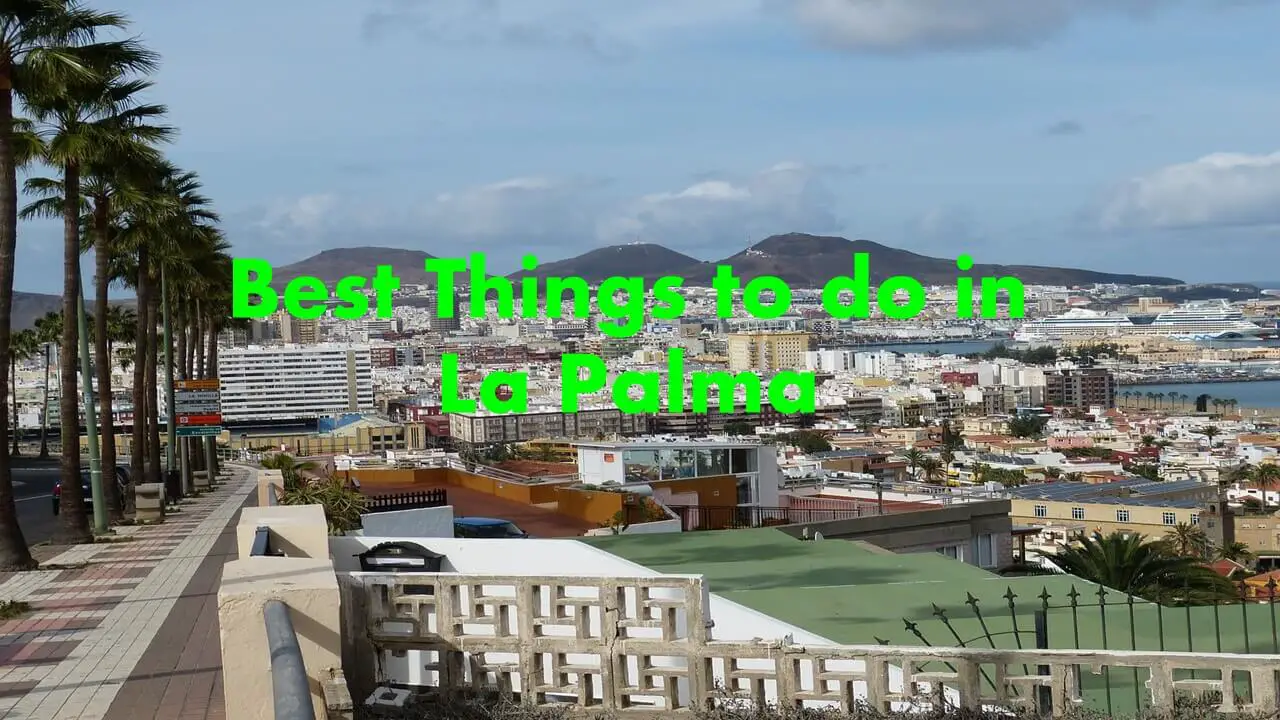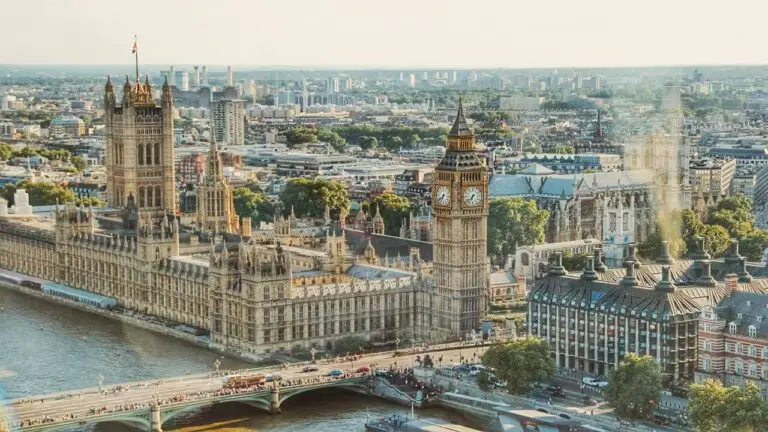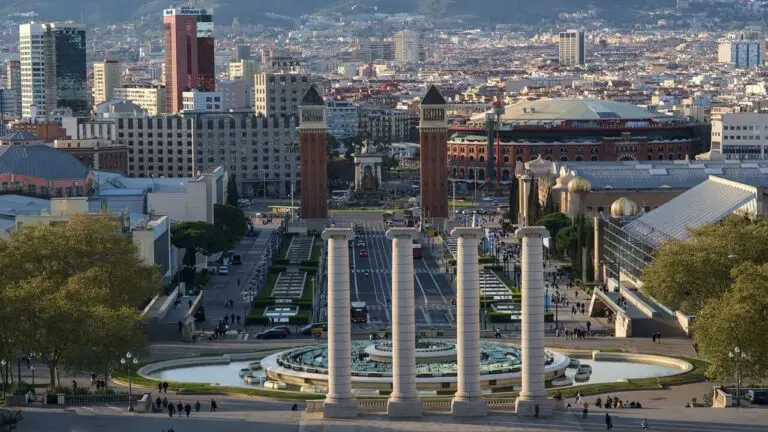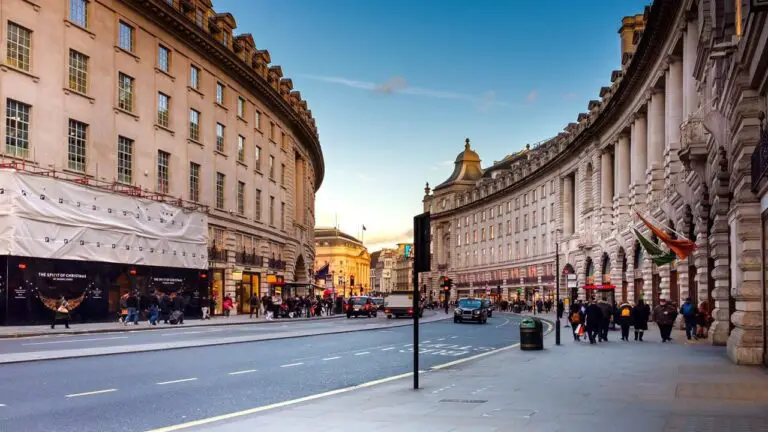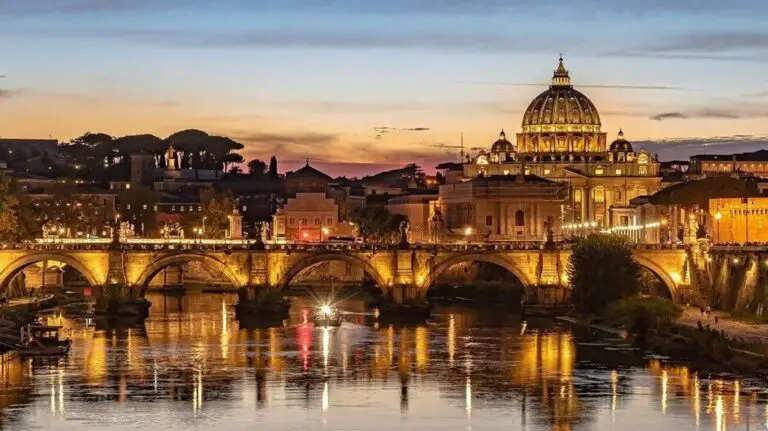22 Best Things to Do in La Palma (Canary Islands)
This list of the best things to do in La Palma is essential to ensure you don’t miss anything on one of the most beautiful islands in the Canary Islands archipelago. La Palma is full of spectacular corners waiting to be explored.
Standing out for its amazing geographical variety and natural beauty, the island of La Palma, also known as La Isla Bonita, offers a span of attractions. Dominated by the Caldera de Taburiente, an immense crater that is part of the National Park of the same name, and the Roque de los Muchachos, the highest point on the island, it is home to the Astrophysical Observatory. This observatory is one of the most important star observation centers in the world, thanks to the exceptional atmospheric conditions and minimal light pollution, showcasing an impressive volcanic landscape.
But the island can’t only boast of landscapes since, in addition to its fascinating natural environment, La Palma is known for its rich cultural heritage, which includes festivals, such as the Fiesta de la Bajada de la Virgen, which is an outstanding event that celebrates local identity and tradition, attracting visitors from all over the world.
After my visit to the Canary Islands, I bring you a list of the 22 best things to do in La Palma. Let’s get started!
1. Santa Cruz de La Palma
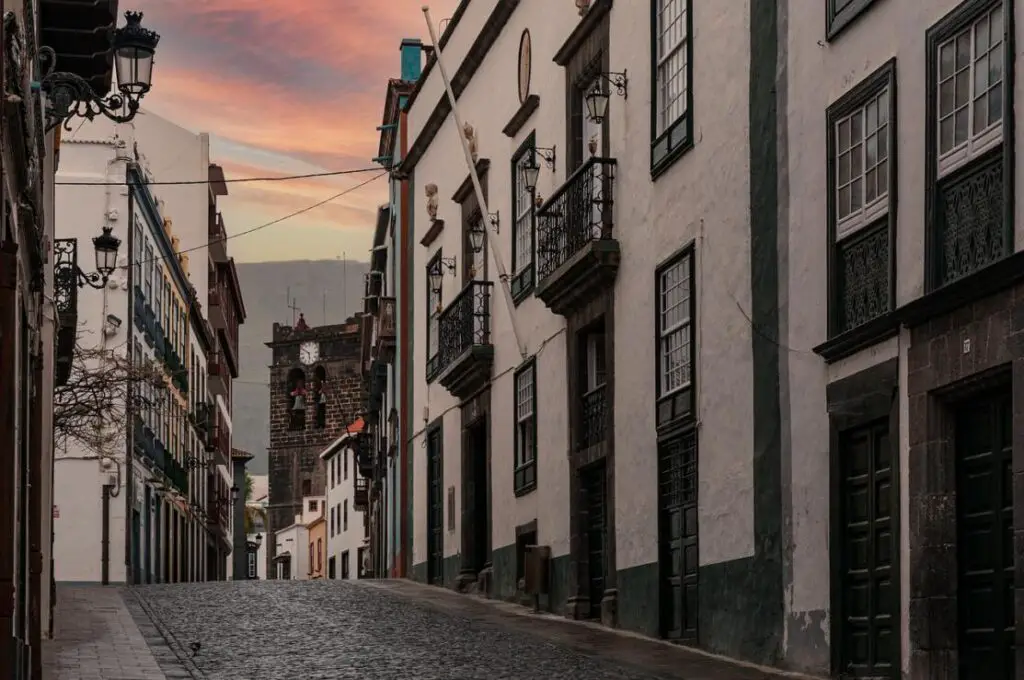
Santa Cruz de La Palma, the capital of the island, is a picturesque and charming city that combines a rich historical heritage with a welcoming atmosphere. Its historical center, declared a Historical-Artistic Site, is full of cobblestone streets, colorful houses with wooden balconies, and squares such as the Plaza de España next to it. I recommend that you spend a few minutes on it. In addition to this, another notable place is the Church of El Salvador, built in the 16th century, which is a great example of Spanish colonial architecture and a place of cultural interest in the heart of the city.
Santa Cruz de La Palma is also known for its port, which historically has been an important connection point between Europe and America, as well as for its several museums, such as the Naval Museum and the Insular Museum, which take you through the maritime history and culture of La Palma.
Keep in mind that if you are visiting La Palma by boat from one of the other islands, Santa Cruz will be your first contact with the island, as this is where the ferries from La Gomera and Tenerife arrive.
To better understand the history of the city and not miss anything important, I advise you to book a free tour of the city.
2. Caldera de Taburiente National Park
The Caldera de Taburiente National Park, located on the island of La Palma, is a natural wonder with its impressive volcanic landscape and its unique biodiversity. In the center of this park is the Caldera de Taburiente, an immense crater eroded by volcanic activity, which was sculpted by the action of water over millions of years and is surrounded by high peaks and cliffs, forming an impressive natural amphitheater thanks to its steep walls.
Do you want to know what you can see and do in Caldera de Taburiente National Park? Well, here I recommend doing one of the trails to enjoy an exceptional variety of landscapes that create unique habitats for a wide diversity of flora and fauna.
Although there are short and accessible trails, the most common is to do the hike that goes from the Mirador de los Brecitos to the Barranco de Las Angustias. Hiking this route is one of the best activities to do in La Palma since it will take you through some of the most beautiful areas of the caldera, such as Hoyo Verde, Cascada de Colores, and Dos Aguas, in approximately 6 hours.
If you are thinking of doing this trail, you have to know some important details:
- Although it is a circular route, not the entire journey is done on foot. You can leave your car in the Barranco de las Angustias parking lot; from there, you must take a taxi to Los Brecitos. In this parking lot, you will find taxis to make this transfer throughout the morning. The approximate price is $60, so the ideal is to get together with other travelers and divide the price by 4.
- The trail has a steep downward slope. The lift is the part that is done with the taxi.
- Organize your time well so that it doesn’t get dark crossing the ravine. The ideal would be to start very early in the morning to be able to finish in the early afternoon.
- The Colors Waterfall is one of the highlights of this route, but don’t expect a big waterfall; it is rather small and may not carry much water when you go. What is beautiful are the colors of the stone through which it falls with brown, green, and yellow tones.
- Bring sun protection and a hat. More than half of the way is through an open ravine without shade at a considerable altitude, so burns and even heat strokes are more than common.
- Bring plenty of water and enough food for the entire journey.
- And, of course, comfortable shoes and clothing for the journey.
In addition to doing it on your own, you can also reserve this hiking route with a guide, who will explain all the geological processes. If you have enough time, the ideal is to dedicate the entire day to the Caldera de Taburiente to make this trail in the morning and close the day at the Mirador de la Cumbrecita. This seems like a great plan and definitely one of the best things to do in La Palma.
3. Mirador de la Cumbrecita, One of the Best Places to Visit in La Palma
The Cumbrecita Viewpoint stands out as one of the most impressive observation points in La Palma. Situated within the Caldera de Taburiente National Park, it provides an ideal vantage point to appreciate a panoramic view of the Caldera de Taburiente. From this elevated location, the view offers a perspective on the majestic landscape, showcasing imposing rock formations and the rich variety of vegetation that characterizes this nature reserve.
Access to the viewpoints is also via a circular path, this time of easy difficulty and about 3km, which will take you more than 1 hour. Through this trail, you will visit two viewpoints: the Mirador Lomo de las Chozas and the Mirador de Los Roques.
If you plan to make this visit, you should keep in mind that you must reserve a space to park your car in the Cumbrecita parking lot. Since 2007, and due to the large number of visitors that this viewpoint receives, the vehicles that can enter during peak hours (from 8:30 a.m. to 4:00 p.m.) are regulated. Here, you have the official page so you can make the reservation.
Once in the parking lot, you will have to look for the Visitor Center, from which the trail starts. It is perfectly signposted, so you will have no problems finding both viewpoints and enjoying the views along the way.
4. Roque de Los Muchachos: One of the Best Things to do in La Palma
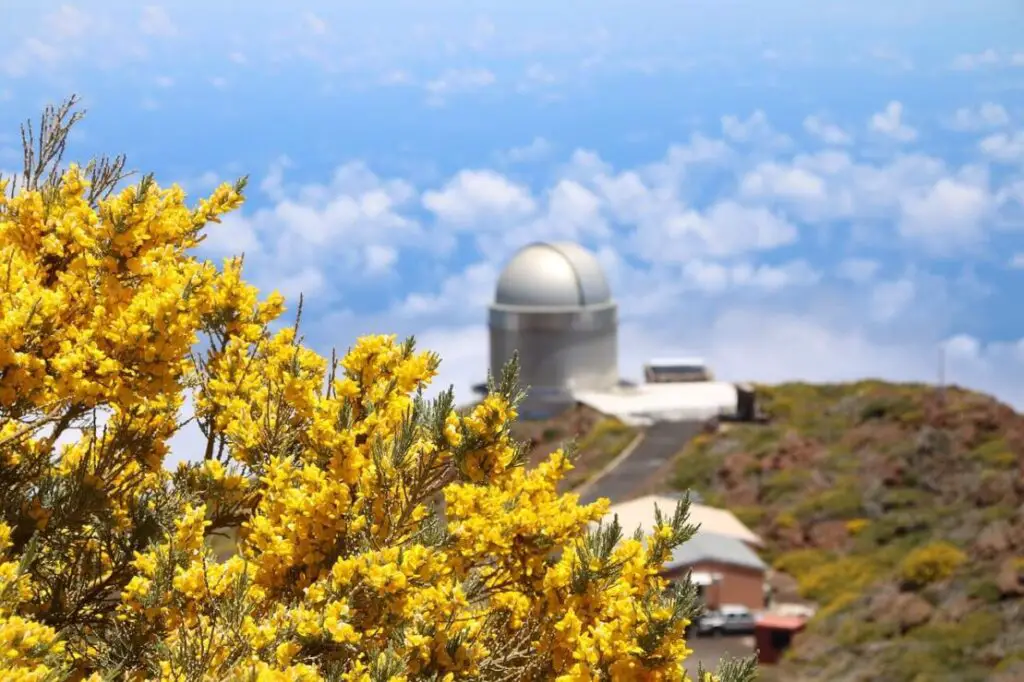
The Roque de los Muchachos is also located in the Caldera de Taburiente National Park, which is just over 2,400 meters above sea level. This rock formation is the result of geological processes that have shaped the island’s volcanic landscape, and the highly varied flora surrounding it stands out, including species adapted to the extreme conditions of altitude and strong winds.
In addition to visiting Roque itself, this area is especially known for the Roque de los Muchachos Observatory. It is an astronomical research center that is one of the most relevant internationally and was inaugurated in 1985. The observatory houses a series of telescopes and observatories from different countries, all taking advantage of the ideal conditions for astronomical observation offered by the location of Roque de los Muchachos.
Notably, among these telescopes is the Gran Telescopio Canarias (GTC), one of the largest optical telescopes in the world. The sky over La Palma is designated as a Starlight Destination and Reserve for stargazing owing to its atmospheric conditions and low light pollution.
Access to Roque de los Muchachos is via roads that will leave you with some of the most beautiful postcards to see in La Palma, thanks to its viewpoints. The ideal thing to do on this visit is to do it in the afternoon to be able to see the Roque and the telescopes during the day. Stay to watch the sunset and wait until it is dark to enjoy the spectacle that the sky offers.
Before making this visit, I recommend that you check the weather to ensure clear skies. Also, bring warm clothing, as the altitude makes nighttime temperatures much lower than they can be in other places on the island.
This visit can be done on your own, but if you don’t want to miss anything, I recommend you book a guided tour. This way, you can know what you are seeing and, in addition, observe some of the stars through a telescope.
5. The Linden Trees
We continue in the north of the island to discover one of the most magical places to see in La Palma. The Los Tilos Natural Reserve is an impressive laurel forest, a type of humid subtropical forest composed mainly of laurels and ferns, which creates a magical and almost prehistoric environment. The Los Tilos forest is part of the La Palma World Biosphere Reserve and has been designated as a Site of Community Importance (SCI) in the Natura 2000 network.
One of the most important attractions of Los Tilos is the Barranco del Agua, a hiking route that will take you through impressive landscapes and waterfalls. However, the best-known and most visited route in Los Tilos, which is also one of the best things to do in La Palma, is the one that takes you to the waterfall, and it does not even last 10 minutes. From the Visitor Center, where you will have to park, there is a small path that takes you to the waterfall. You can’t miss it.
If you have more time, the ideal is to use this short route to start another longer trail around here, such as the Espigón Atravesado route, the Cubo de la Galga, or the births of Marcos and Cordero.
6. La Galga Cube
We continue with the most natural aspect of the island, and in this case, I recommend visiting the Cubo de la Galga, which is undoubtedly another of the best tourist spots in La Palma.
Do you want to know the reasons? Well, I can tell you that one of the main attractions of Cubo de La Galga is a hiking route of 11 kilometers, perfectly signposted, that goes into laurel forest, taking you through the ravine and its surroundings.
During the walk, you will be able to enjoy waterfalls, pools of crystal clear water, and a wide variety of endemic plant species. In addition, the area has strategic viewpoints that offer impressive views of the landscape and the Atlantic Ocean. It is one of the most frequented routes on the island, and although it has a slope of almost 750 meters, it is accessible to almost anyone, even if you are traveling with children.
7. Marcos y Cordero: One of the Points of Interest in La Palma
Marcos y Cordero, also known as the water route, is a nature reserve known for its scenic beauty and traditional irrigation system. It creates a network of water channels called the tiles. However, this place not only stands out for that. The walk to Marcos y Cordero is a unique experience that will take you through tunnels and paths surrounded by exuberant vegetation.
One of the most notable aspects of Marcos y Cordero is the presence of the source of the Marcos River, which supplies water to the canals of the tiles. These canals, built centuries ago, are a sample of traditional Canarian hydraulic engineering. They were used to transport water from the areas with the highest rainfall to the driest areas of the island. Throughout history, this system has been crucial for agriculture and life in La Palma.
To enjoy the most popular route, you will have to take a taxi from the Los Tilos Visitor Center to Casa del Monte, the beginning of the Marcos y Cordero route. These taxis have a price of about €140 and have eight seats, so the amount is divided among the people who go. The idea is to take the first taxi in the morning (9:00 a.m.) to make sure it is full and pay as little as possible.
The route is medium-high difficulty since you will walk about 13 kilometers divided between a flat area at the beginning and another descent slope. Along the way, you will cross 13 mountain tunnels where water is the main protagonist. Although the first 11 tunnels do not have a large flow of water, tunnel 12 is the exception since the waterfalls are massive, and it is impossible not to get wet. As you cross this, and with only one more to go, you will find the headwaters of the Marcos River. After crossing the last tunnel, all that remains is descending through the ravine until you reach Los Tilos.
Although this route is impressively beautiful, certain considerations must be taken before taking it:
- Although the slope is not so great and the distance is not so much, the presence of water makes the trail medium-high difficulty. The terrain can be slippery, and not completely prepared for a walk.
- It is necessary to have a flashlight to cross the tunnels. Some are around 100 meters long inside the mountain without any type of artificial or natural lighting.
- Do not do this route on rainy days or after very heavy rain because, in addition to increasing the danger, you may encounter areas with the passage closed by water.
- Wear appropriate footwear for the route and waterproof clothing.
- Access to the trail closes at 2:00 p.m. in summer and at 12:30 p.m. in winter. Make sure you are there before.
- Although it can be done on your own, I believe that this is one of those excursions in which it is better to take a guide.
8. Tazacorte and its Beach
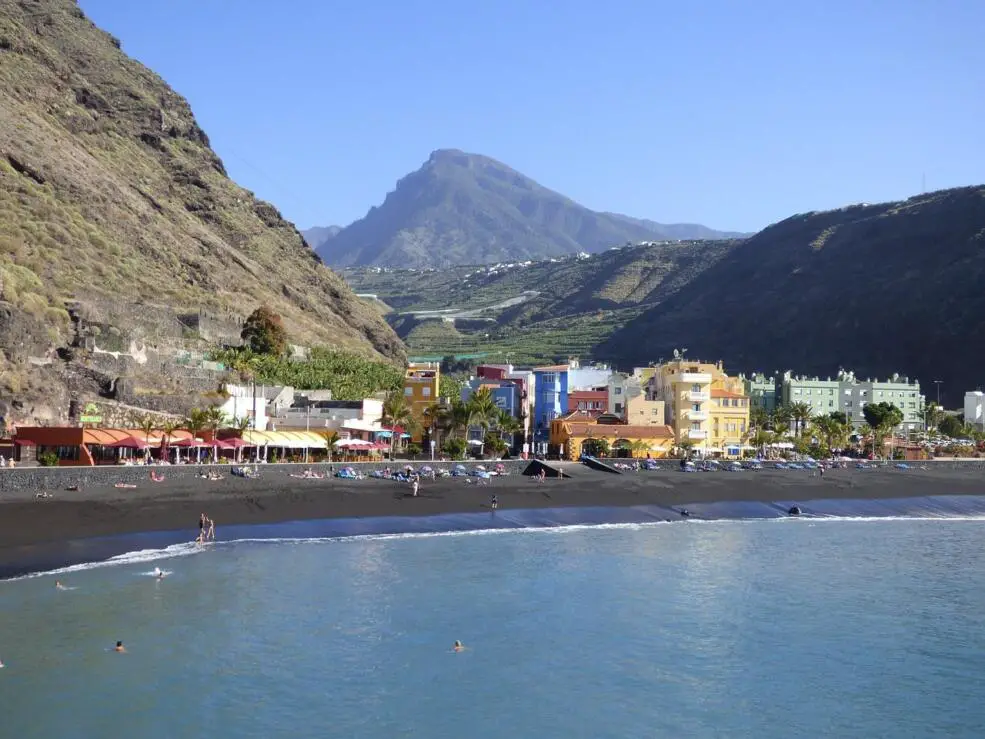
Tazacorte is a nice municipality in La Palma to visit, thanks to its relaxed atmosphere and pleasant climate. Known for its beautiful landscapes, traditional architecture, and one of the most outstanding beaches on the island, this visit will allow you to rest for a few hours in the most exuberant nature of this magnificent island.
Tazacorte Beach is an extensive black sand beach protected by a pier from the strong currents and waves of the Atlantic. For this reason, this is an ideal place for enjoyment and rest, making a visit here one of the best things to do in La Palma.
Do you want to enjoy another type of experience? From this town, it is common to do whale and dolphin watching excursions in a glass bottom boat or enjoy a yacht ride.
9. San Antonio Volcano
La Palma, in addition to being known as the Isla Bonita, is also an island of volcanoes. The south of the island is full of volcanoes that form one of the most impressive landscapes of the Canary Archipelago. One of the greatest examples and one of the best places to visit in La Palma is the San Antonio Volcano. It is part of the chain of volcanoes that make up the Cumbre Vieja volcanic system in the south of the island.
This is known for its conical shape and its impressive crater. It is historically considered one of the most active on La Palma as it has experienced several eruptions over the centuries.
Currently, you can take a short walk from the Visitor Center to the crater, which, in addition to taking you to walk along the top of a volcano, will offer you panoramic views of the south of the island. On clear days, it is even possible to see the silhouette of the neighboring island of El Hierro.
10. Volcano Route
The Volcano Route is one of the most emblematic hiking routes if you’re looking for what to do in La Palma, as it offers a unique experience to explore the volcanic landscape of the island. The route, which covers around 22 kilometers, begins at the Refugio del Pilar and ends at the Fuencaliente Lighthouse. Along the way, it passes through mountain ridges, ancient volcanic cones, and lava fields.
Along the Volcano Route, you can enjoy impressive panoramic views, including the Caldera de Taburiente, the Aridane Valley, and the Atlantic Ocean, although one of the highlights is the view of Teneguía, a volcano that last erupted in 1971. Additionally, as you progress along the route, you will pass through diverse ecosystems, from pine forests to areas of solidified lava.
Remember that, as in the previous hiking recommendations, you must have the necessary equipment to carry out this route, such as appropriate footwear and clothing, a hat, sun protection, and enough water and food for the entire journey.
11. Tajogaite Volcano
On September 19, 2021, the Tajogaite Volcano erupted, and this eruption lasted until December 13 of the same year. This event makes it another of the top attractions in La Palma that you need to visit.
The Tajogaite Volcano, belonging to the Cumbre Vieja, has left a new landscape on the island worth exploring as part of its recent history. You can take a guided tour along a new path that has been enabled. These tours are conducted by local guides who know and have experienced the eruption in all its phases. They will tell you in detail the story and how to experience the eruption of a volcano up close.
This visit lasts about 2/3 hours and departs from the El Paso Tourist Information Office. If you have enough time, it is one of the best things to do in La Palma. In addition to the usual recommendations when you are going to hike a trail, it is important that you keep in mind that, since the eruption is still very recent, the volcano’s gas emissions continue to be monitored to check whether or not it is appropriate to visit. This means that if the levels are above what is allowed, they will be able to cancel the excursion. It is important to know that the visit cannot be done on your own.
12. Salt Flats and Fuencaliente Lighthouse
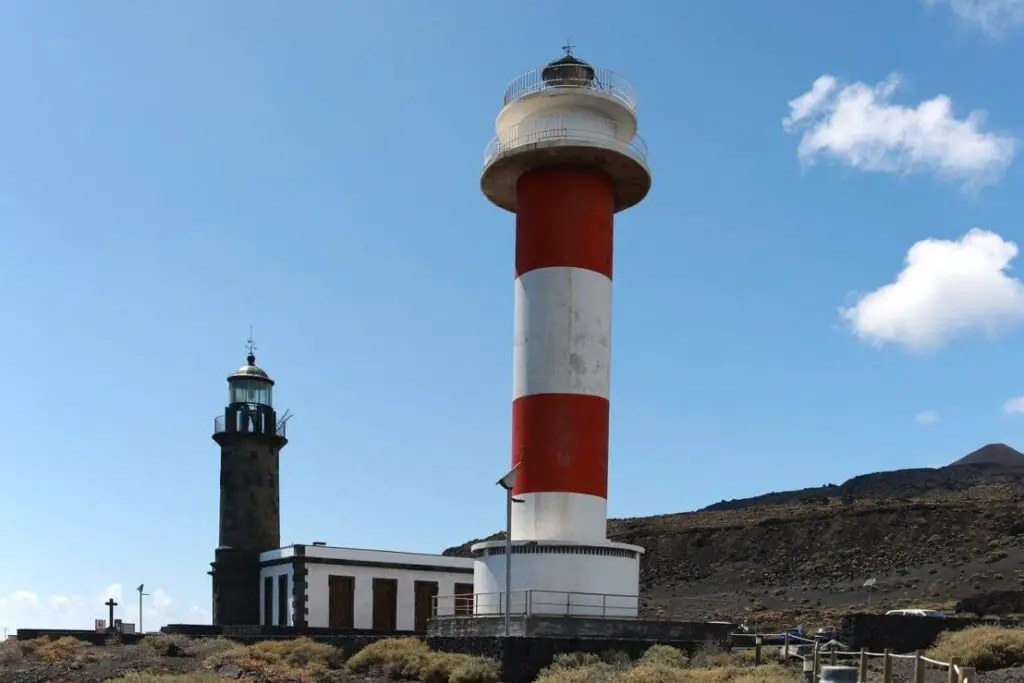
The Salinas and the Fuencaliente Lighthouse are two emblematic places to visit in La Palma. They serve as a testimony to the salt-making tradition on the island, with a history that goes back centuries. The salt complex has evaporation pools that harness solar energy and wind to produce high-quality sea salt. Here, you can explore this production process and learn about salt’s historical and economic importance in the region.
Additionally, near the Salinas is the Fuencaliente Lighthouse, which marks the southern point of the island. Built in 1903, the lighthouse offers spectacular panoramic views of the cliffs, ocean, and salt flats. Moreover, this is the perfect place to see the sunset and, without a doubt, one of the best places in La Palma to witness the sunset.
13. Echentive Beach
On the south coast is one of the most beautiful beaches to see in La Palma, Echentive Beach. With black sand, this beach stands out especially for its beauty and spectacular natural environment, contrasting with the intense blue of the Atlantic Ocean and creating a visually striking landscape. Of volcanic origin, the beach is relatively unspoiled and quiet, offering a secluded place to enjoy the waves and peace.
However, it is important to note that sea conditions can be somewhat dangerous in this area, so caution is advised when swimming. Access is via stone stairs that, once they reach the beach, branch into several paths that take you to different areas of the beach. Don’t worry if you go by car, since there is a parking lot in the area of the road. If you want to go by public transport, there is a guagua from the town of Fuencaliente.
14. Charco Azul: Another of the Best things to do in La Palma
El Charco Azul is a unique natural enclave on the island that stands out for its scenic beauty and its calm atmosphere. Located in San Andrés y Sauces, this space is known for its natural saltwater pools, which are formed between volcanic rocks and filled with ocean water. The combination of crystal clear waters, rock formations, and surrounding vegetation creates a stunning landscape that attracts locals and tourists alike.
Keep in mind that the natural pools of Charco Azul are ideal for bathing and snorkeling since the tide constantly renews the water. Around the pond, you will find bars, sunbathing areas, and trails that allow you to explore the area, making it one of the most recommended plans on the island if you are looking for some fun.
15. Mirador del Time
The Mirador del Time is one of the best places to see in La Palma, thanks to its stunning views. Although, in reality, it is located in such a privileged location on the road that connects the towns of Los Llanos de Aridane and Tazacorte, it has become another of the island’s essentials.
From the El Time Viewpoint, you can see the banana fields that characterize the region and the contrast of the coast with the blue ocean. The view extends to the horizon, allowing, on clear days, to see other nearby islands.
You can reach the viewpoint by car or, if you are a traveler who wants to gain the privilege of the views, go up on foot the very steep path (+- 3 kilometers) that starts from the Tazacorte pier.
16. La Fajana Pools
The La Fajana Pools are natural pools that have become one of the most beautiful places to visit in La Palma. They are known for their crystal clear waters and spectacular views of the ocean. Not only that, but you can also dive into the pools and enjoy a swim while listening to the sound of the waves breaking on the rocks. Access to the La Fajana Swimming Pools is easy since you can leave your car practically next to the facilities and rest areas. This makes a visit here one of the best things to do in La Palma.
17. Viewpoint of Izcagua
In the town of Puntagorda, you will find one of the most beautiful viewpoints on the island. Very close to the recreational area of El Fayal and the Puntagorda Farmer’s Market, you will find this viewpoint of the Izcagua ravine. It is formed by glass walkways that allow you to have impressive views. Super recommended!
18. Porís de Candelaria
The Porís de Candelaria is one of the most impressive places in La Palma. Do you know the reasons? Because it is a town hidden in a cave that creates one of the most beautiful settings on the island.
And if this were not enough, this small town, which is already worth a visit in itself, also has the most beautiful natural pools in the entire Canary Islands, making it, without any doubt, another of the best La Palma attractions.
Keep in mind that it can be reached in three different ways: by car, walking and by boat. After seeing the state of the roads, I believe that going by car is the worst option, so I recommend choosing between walking or going by sea.
The route on foot is about 11 kilometers round trip, which, although not very difficult, does have a large slope. Before reaching Porís de Candelaria, you will pass through places such as the Barranco del Jurado Natural Monument. If you decide to do it by boat, you can take the opportunity to do some dolphin watching in the area.
19. The Plains of Aridane
Los Llanos de Aridane is one of the most important urban centers on the island. Its name, which means plains or plains, reflects the area’s relatively flat topography, which contrasts with the mountainous and volcanic areas surrounding it.
The historic center of Los Llanos de Aridane has traditional Canarian architecture, cobblestone streets, and a lively central square, the Plaza de Espana, which is the social and cultural heart of the city. Here, you can enjoy the local atmosphere, explore shops, restaurants, and bars, and appreciate everyday life in La Palma while looking for some of its impressive street art murals. The church of Nuestra Senora de los Remedios, with its white façade and elegant bell tower, is one of the landmarks.
In addition to its historical charm, Los Llanos de Aridane is also known as a starting point for various outdoor activities thanks to its proximity to the Caldera de Taburiente and numerous hiking trails that make Los Llanos a strategic place to explore the nature that La Palma offers.
20. San Andrés y Sauces
San Andrés y Sauces is another of those essential places to visit in La Palma. The town of San Andrés, which is the main one in the municipality, has a beautiful historic center with cobblestone streets and houses with traditional Canarian architecture.
One of the highlights in San Andrés y Sauces is the Church of San Andrés, which dates back to the 16th century and features religious architecture typical of the region. Plaza de Montserrat is another emblematic place, surrounded by historic buildings and leafy trees, providing a relaxing space for residents and visitors.
In addition to the places of interest, from a natural point of view, San Andrés y Sauces is known for its green valleys and laurel forests. From here, you can access, for example, the Tilos Forest or the Charco Azul.
21. Los Cancajos, Another of the Best Things to do in La Palma
Los Cancajos is a charming coastal town located on the island of La Palma in the Islas Canary Islands. This is known for its Blue Flag beach, black sand, and crystal clear waters.
It is also important to keep in mind that this is one of the best places in La Palma to find accommodation since it has the complete hotel infrastructure. It is also located close to La Palma Airport, Santa Cruz de La Palma, and its port.
In addition to beach amenities, if you stay in Los Cancajos, the town will serve as a base for exploring other nearby places, such as the Caldera de Taburiente National Park.
22. Los Indianos
Los Indianos is one of the best things to do in La Palma and one of the most emblematic celebrations on the island. It is celebrated on Carnival Monday, marking the climax of the festivities on the island, and if it coincides with your visit to the island, it is something you cannot miss.
Want to know more? This festival has its roots in La Palma’s historical connection with America, as many palmers immigrated to America in search of fortune during the 19th century. The tradition of Los Indianos commemorates the return of those who were successful in their businesses in America and returned to the island with new wealth and culture.
During Los Indianos, the streets of Santa Cruz de La Palma are filled with people always dressed in white costumes and period accessories. Talcum powder, symbolizing the wealth brought from the Americas, is thrown throughout the day, covering anyone in the city.
Participating in Los Indianos is one of the best activities to do in La Palma. If you plan to go, remember to book your accommodation and tickets well in advance.
How to Get to La Palma
Getting to Isla Bonita can be done in several ways, and everything will depend on your starting point. If you are already in the Canary Islands, you can reach La Palma through inter-island flights.
The main airlines operating in the Canary Islands, such as Binter Canarias and Canaryfly, offer frequent connections between the islands. Airports on the larger islands, such as Tenerife, Gran Canaria, and Lanzarote, usually have direct flights to La Palma.
There are also ferry services that connect the islands of La Gomera and Tenerife with La Palma. From other islands, you would have to make a connection with a nearby island, as would be the case of La Gomera if you go from El Hierro or the case of Tenerife if you go from Gran Canaria.
If you are outside the islands, as a general rule, you will have to take a direct flight from the main airports in Spain (Madrid and Barcelona) and a flight with a stopover from other cities in the country. Normally, the stopover is on the island of Tenerife, where you can also take advantage of a visit.
Also, keep in mind that La Palma is accessible from several European airports through direct flights such as Hamburg, Stuttgart, London, Amsterdam or Dusseldorf. Direct flights are more frequent during peak season, but connections via major European cities are also common year-round.
Where to sleep in La Palma
In La Palma, you will find a wide variety of accommodation options that adapt to different preferences and budgets. The capital of the island, Santa Cruz de La Palma, has a selection of hotels, hostels, and apartments that offer a very good value for money, in addition to being in one of the island’s tourist centers. The Los Cancajos area, located near the airport, is known for its beachfront resorts and black sand beaches, making it an excellent option if you are looking to stay near the sea.
If you prefer a quieter experience in contact with nature, there are rural accommodation options throughout the island. Small rural hotels, rural houses, and cabins will offer you the opportunity to immerse yourself in the natural environment of La Palma, especially in areas such as El Paso or around the Caldera de Taburiente. These places usually offer panoramic views, peace, and an authentic Canarian experience.
How to get around La Palma
As in the rest of the Canary Islands, the ideal way to get around La Palma is to do it in a rental car.
If you are already going by ferry from another island, it is best to take your car on the boat. If you arrive by plane, you will have to rent at the airport.
If you do not want to travel by car, you could do so by public transport, although this means having to spend more time traveling and not reaching all the places to visit in La Palma. Guaguas (buses) connect the most important points of the island, as well as the beginnings of some of the best-known routes on the island.

